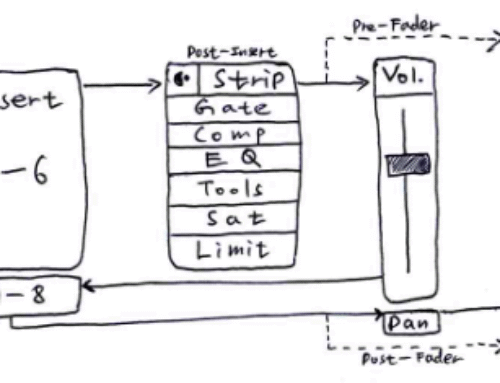| Recent Comments |
| Categories |
| Archives |
| Tags |
Wehkamp: a webshop in times internet didn’t exist (Wednesday 9 May, 2024)
I recently came across a picture of the Phonic audio mixer. This reminded me of the eighties when I bought this mixer myself. It was the very first mixer that I owned. It had 8 mono jack/RCA inputs that could be switched for microphone, phono (vinyl record player), or line input. Each channel had a two-band EQ, and effect sends, and a pan control. The effects send fed the single effect that this machine had onboard: a delay. A staggering number of two stereo outputs were available, and it even had two VU meters. What else could you wish for? I am not sure why I bought this device at that time, but my best guess is because I wanted to connect both my organ and Bit 99 synthesizer to my HiFi amplifier. I might have owned a cheap microphone as well. Anyway, it was my first step into audio engineering and music production, and on this analog mixing desk I acquired my first mixing skills.
Images: The analog Phonic Audio Mixer.
A notable fact is that I ordered this mixer from Wehkamp, a Dutch mail order company. In a sense the equivalent of current webshops but at times internet didn’t exist. Wehkamp was founded by Herman Wehkamp. In 1939, his father asked on his deathbed if Herman wanted to take over his textile shops in Slagharen, Zuidwolde and Vroomshoop. Herman agreed. In his search for expansion, Herman Wehkamp opted for distance selling in the early 1950s. In 1952 he started his own shipping house in a wooden shed behind the parental home: Wehkamp’s Factory Office. The first advertisement, for a mattress, appeared in the NCRV guide on February 26, 1952. The first catalog appeared in 1956. In that year, Wehkamp was renamed Wehkamp’s Mail Order Combination and sold beds, steel furniture and linen, among other things. Herman Wehkamp made Wehkamp one of the largest mail order companies in the Netherlands.
Thus, in the eighties, going through one of the Wehkamp catalogs (a thick paper book with hundreds of pages that we received twice a year) I found the Phonic audio Mixer and ordered it. I don’t recall what I paid for the device but I’m sure I paid in terms.
Image: The Wehkamp catalog from 1985 (614 pages!).
Many will agree that a mixer is the most essential tool for a home and professional studio. Over the years I have owned quite a few mixers that I used in my home studio, or live with bands I played in. Many of these mixers were from Behringer because they were relatively cheap and of reasonable quality.
Image: Two examples of Behringer mixers I used in my home studio.
Image: Three examples of mixers I used live.
Currently, I use the Behringer X32 digital mixer for already over 10 years to connect all my instruments and studio equipment. I satisfies all my needs but just wondering for how many years it will continue to work……. Repair, when it breaks down, will be challenging as you can read in various forums on the internet.
Image: The Behringer X32 Digital Mixer.
Mixers are also found as part of Digital Audio Workstations (DAWs) such as Cubase. These are not hardware but software mixers that offer all (and more) possibilities of their hardware counter parts. However, this are typically operated with a mouse and keyboard.
Image: The mixing console of Cubase (Digital Audio Workstation) with the SSL Channel Strip (plugin) on top.
See also my YouTube video about the similarity between hardware and software mixers
To avoid working with a mouse and keyboard when using a DAW and to get the ‘old-fashioned’ mixing console experience with DAWs, many hardware devices have been developed, with varying success, to control DAWs. I own several of such hardware controllers [here]. Read also my post about the perfect DAW controller.
Image: A selection of my DAW controllers. The SSL UC1, the Softube Console 1 Fader, and the Avid S1.
In addition to all these ‘amateur’ mixers mentioned above, I also had the pleasure to briefly work with professional mixing consoles. One was the 60-channel frame (56 loaded) AMS Neve 88RS console with Encore Plus automation from Trypoul Recording Studios. The second one, was the 42-channel SSL 4000E console from with G+ automation and total recall from Solid State Logic; also at Trypoul Recording Studios. The third one, a large DDA console (no longer with us) at Studio Moskou.
I recorded the band Recover on the AMC Neve desk at Trypoul. Listen to River deep mountain high and I can’t stand the rain.
Image: The AMS Neve, SSL 4000E, and a DDA console.
As a nice bonus, a studio tour at Trypoul Recording Studios.
Abbey Road Studios (London) used an EMI REDD.51 recording console from circa 1959 to 1968. The introduction of eight track recording in the late ’60s had pushed the technical capabilities of the original REDD desks to their limits and, therefore, it was decided to replace this console with a TG console. Read more about it [here]. The TG 12345 Mk I desk was used on the Beatles’ Abbey Road record and on several solo Beatles’ recordings. John Lennon’s Instant Karma was wholly recorded and mixed on the desk, as was much of Ringo’s Sentimental Journey album. Some sessions for Paul’s McCartney album also made use of the desk, and Maybe I’m Amazed and Every Night were both recorded and mixed entirely on the TG. George Harrison’s classic All Things Must Pass album was very much a product of the TG as well. Currently, one of the consoles they use, in Studio One, is a AMS NEVE 88RS – 72 channel.
Image: The EMI REDD.51, TG 12345 Mk I, and the AMS NEVE 88RS.
To close, a take home message from Solid State Logic: always have your faders resemble a sine wave for the best mixing results!!































